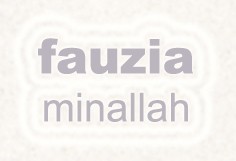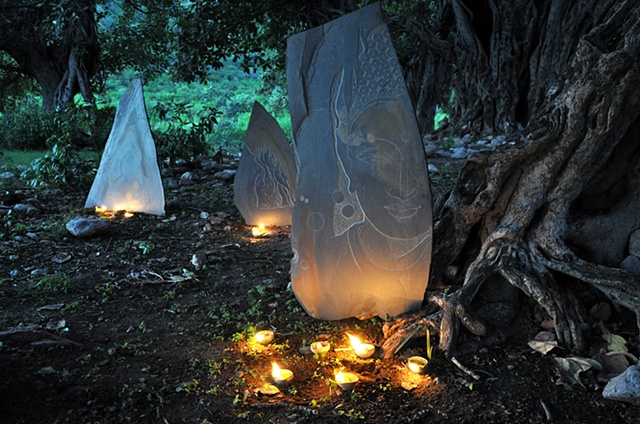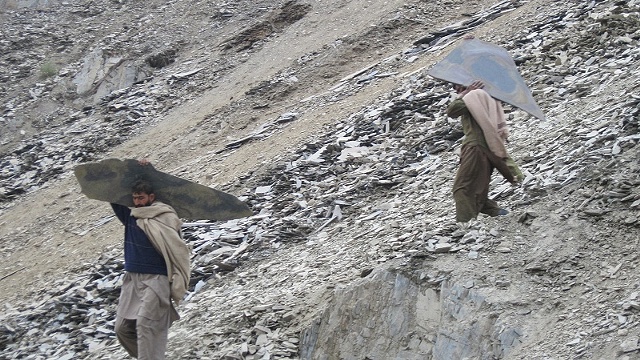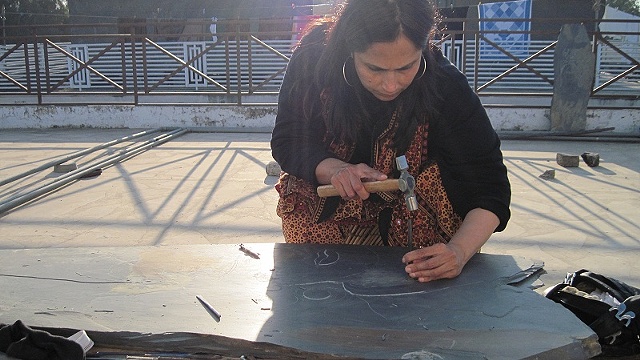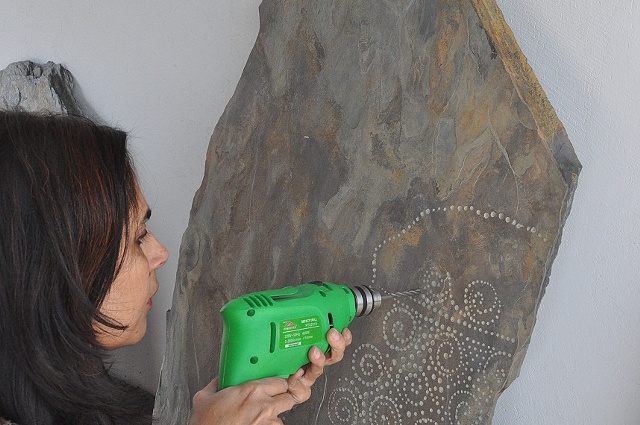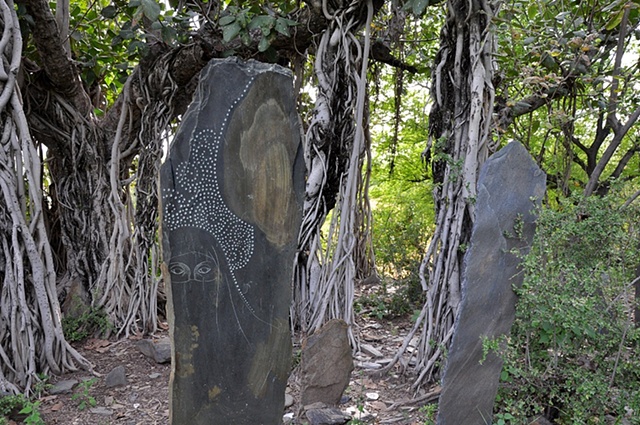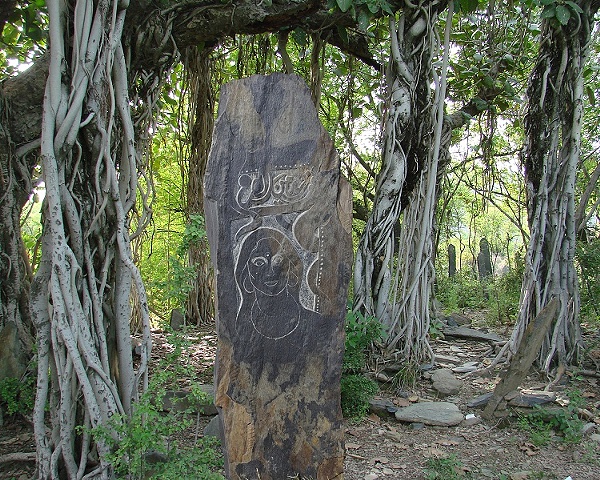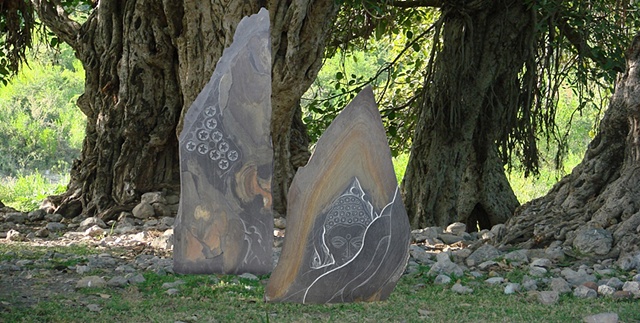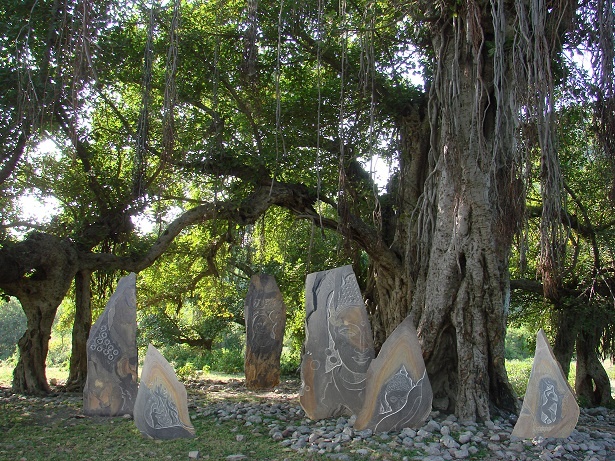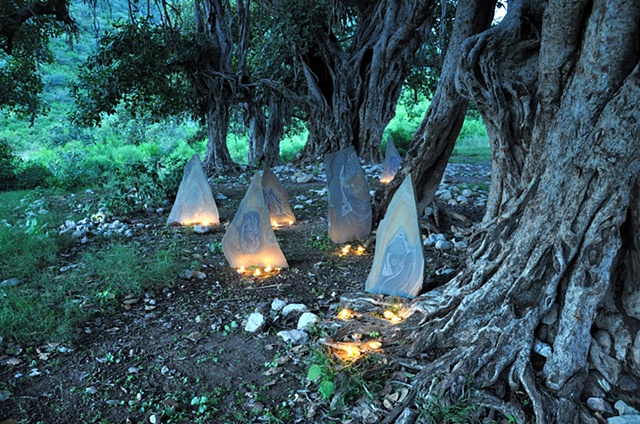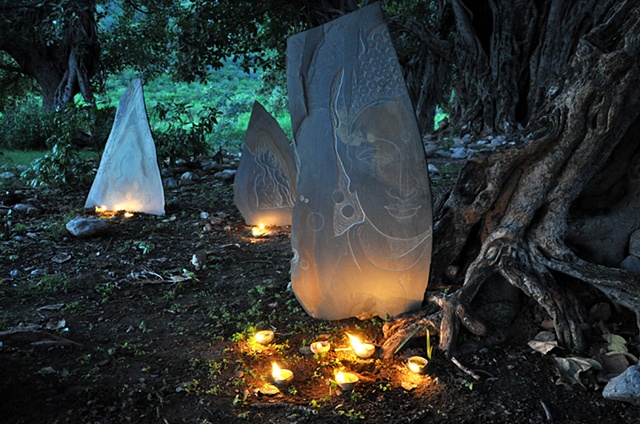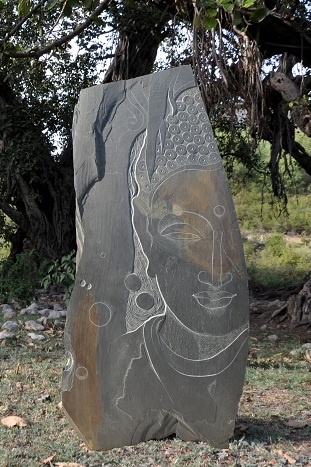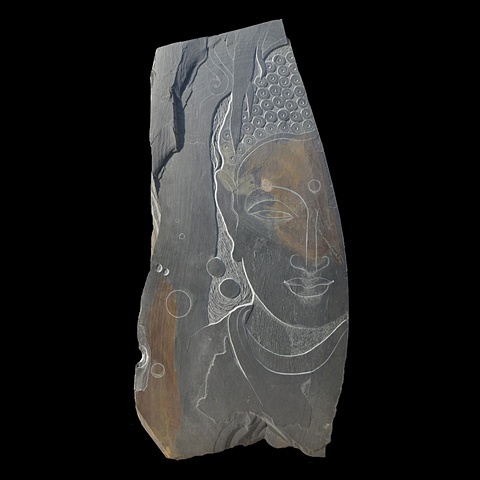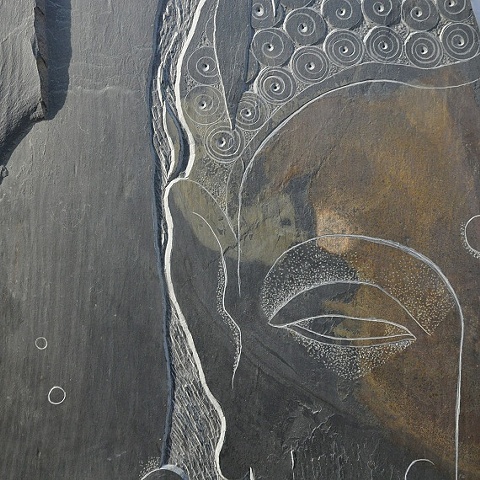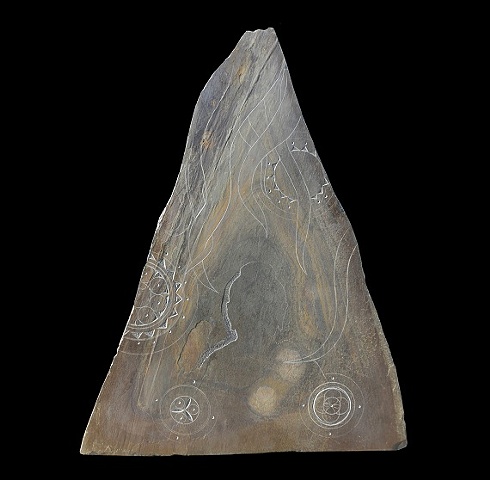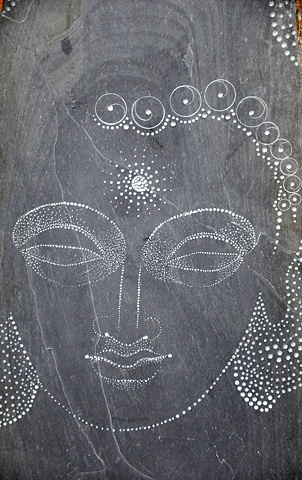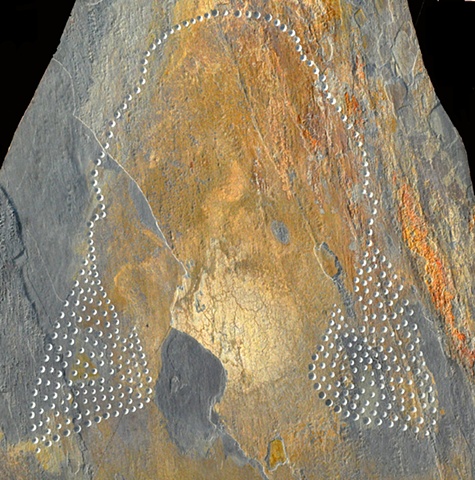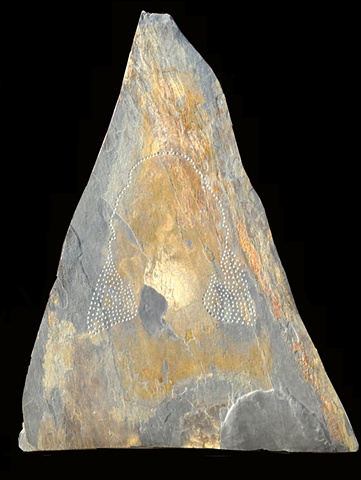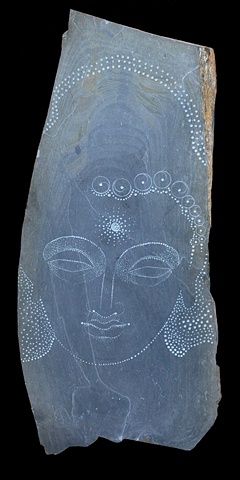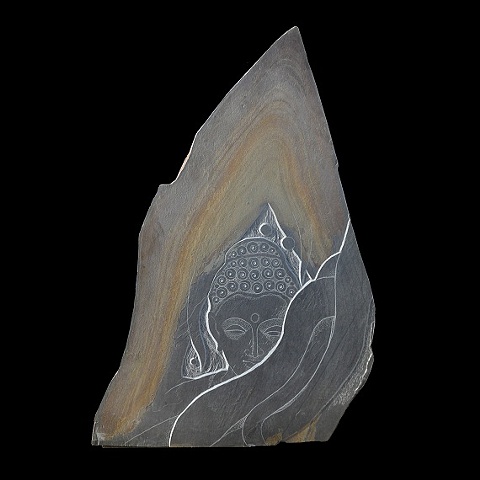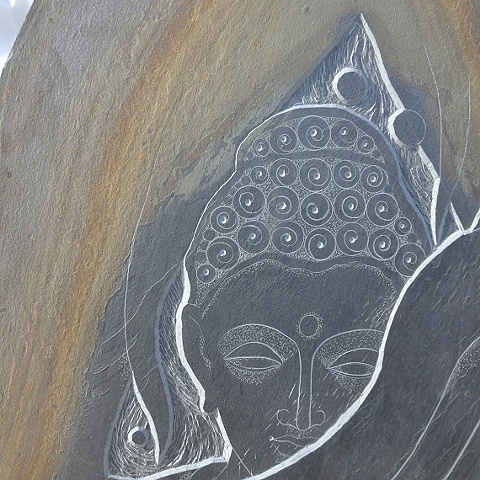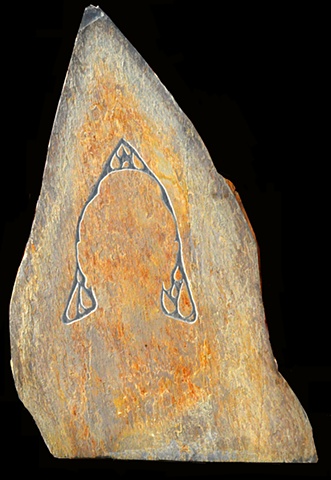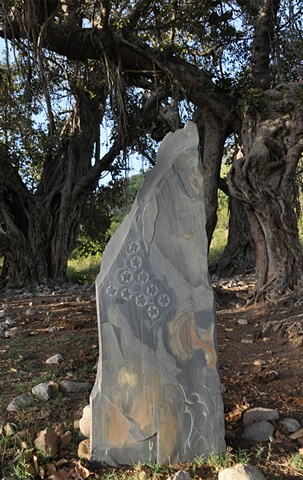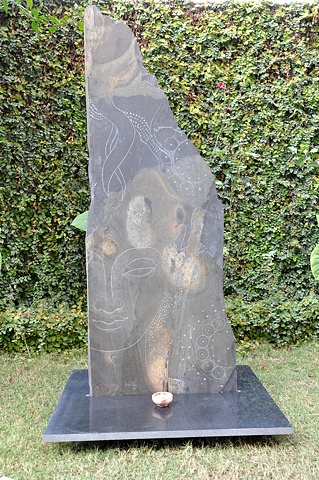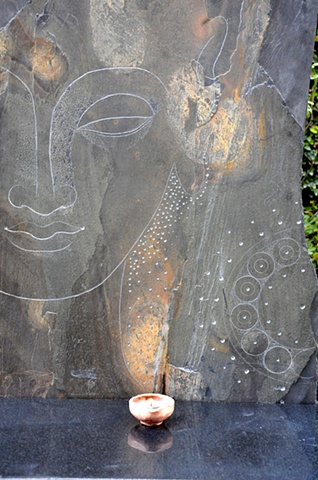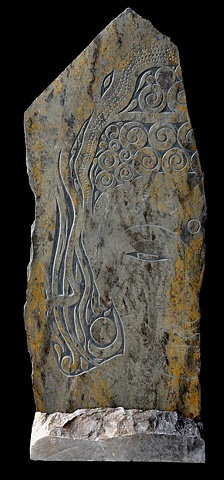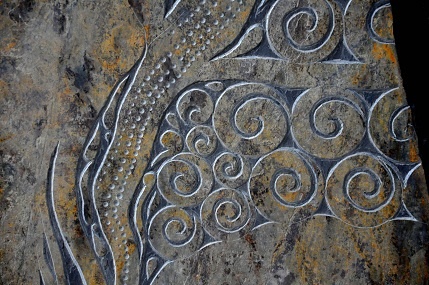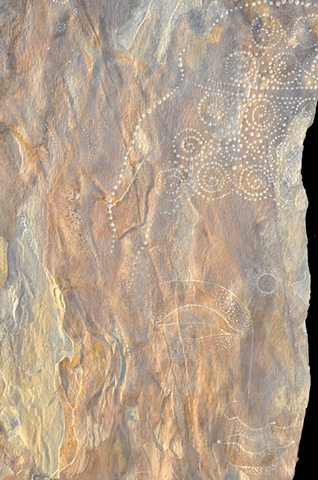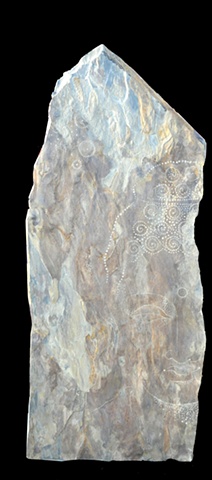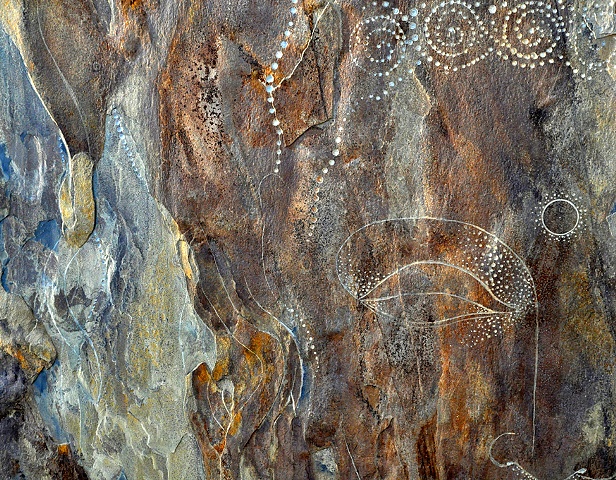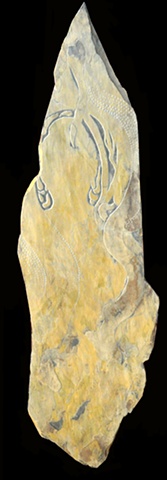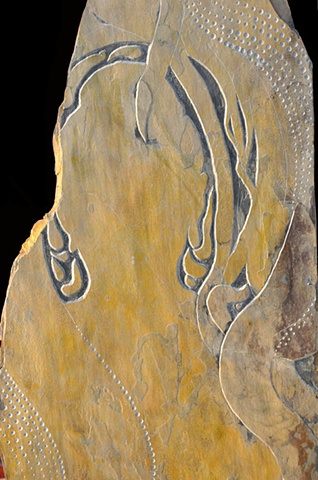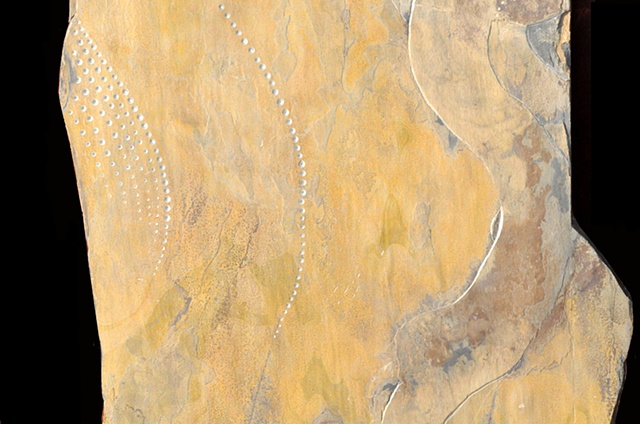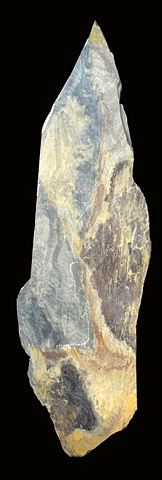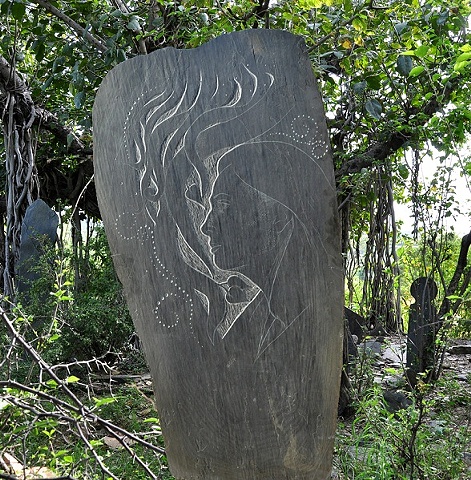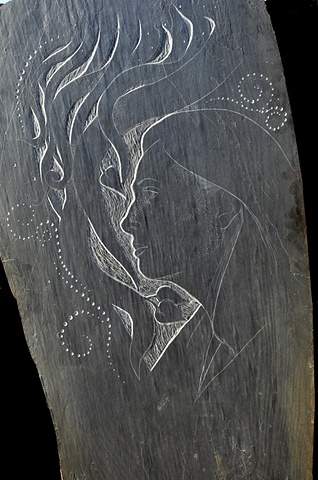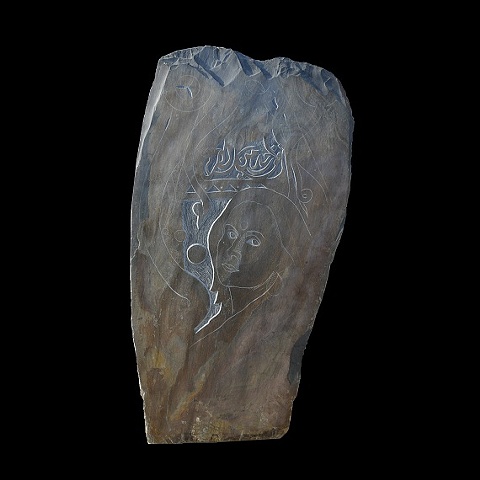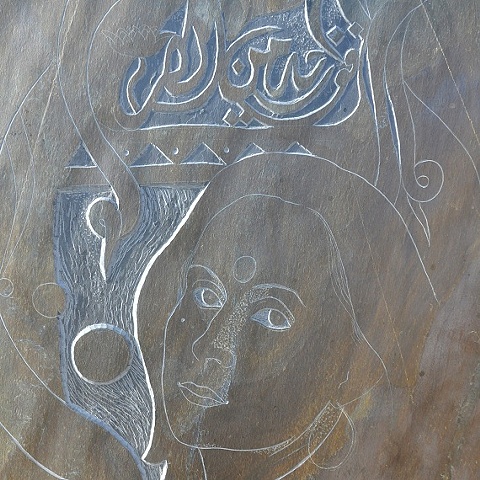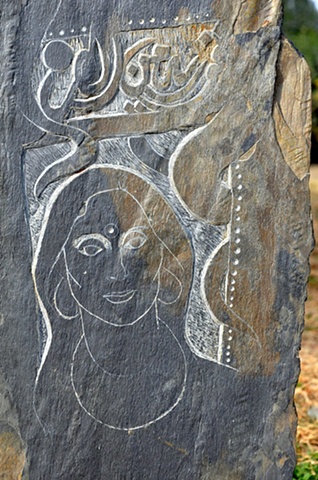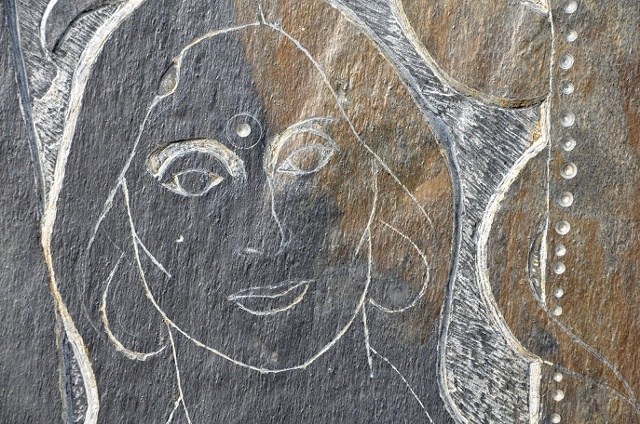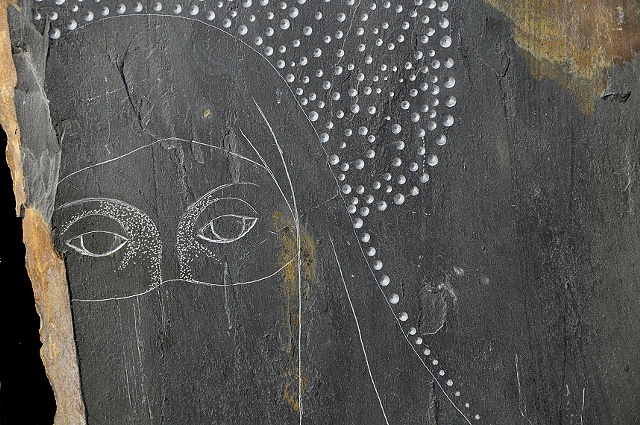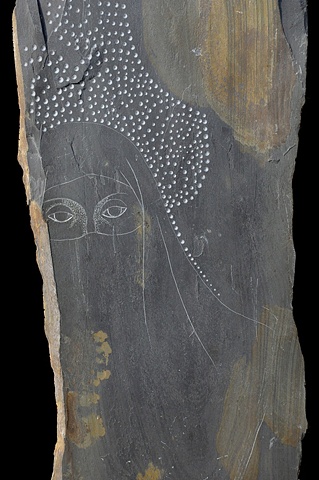Buddha still lives in Pakistan
As an artist the image of the vandalized face of seventh century, Jehanabad Buddha, which was destroyed by terrorists in Swat Pakistan, is etched in my mind. It has inspired me to work on my series of ‘Buddha still lives in Pakistan’.This work reflects my South Asian identity, of a practicing Muslim but the magnificient Gandhara civilization also a part of it.
While working on this work what better medium to choose than chitarkari, a folk art from my hometown in Hazara. The somber grey slate gets an amazing palette of colours, as a result of hundred of years of natural process involving different minerals one finds all sorts of images already in the stone. Some stones have wonderful metallic sheen, all a result of different minerals in the slate. I really enjoy carving the slate with more clay in it as it is so much softer that the dark grey one. It is while I am carving the stone I get ideas of further exploring it. Although my work is about expression of ideas but while working with slate it is also about exploring the material and keeping its integrity intact.
Besides the image of Buddha, I am also repeating the images of dancing figures in different Bharatnatyam poses, all the symbols of beauty a part of our South Asian heritage that are fading away as a consequence of the ‘engineering’ of our identity. I find my inspiration in Gandhara art. I love this beautiful fusion of the East and West.
While I worked, I was listening to Faiz Ahmad Faiz's famous poem 'Yeh Haath Salaamat hain jab tak'. This poem had a special meaning because in 2010 I finished carving slabs of slate stone for the ' Buddha still lives in Pakistan'. Each chisel and electric drill marks were done by my own hands. I was free of guilt, because working with the craftsmen it was difficult for me to make them understand why an idea is very important and why my work sells for more than theirs.
